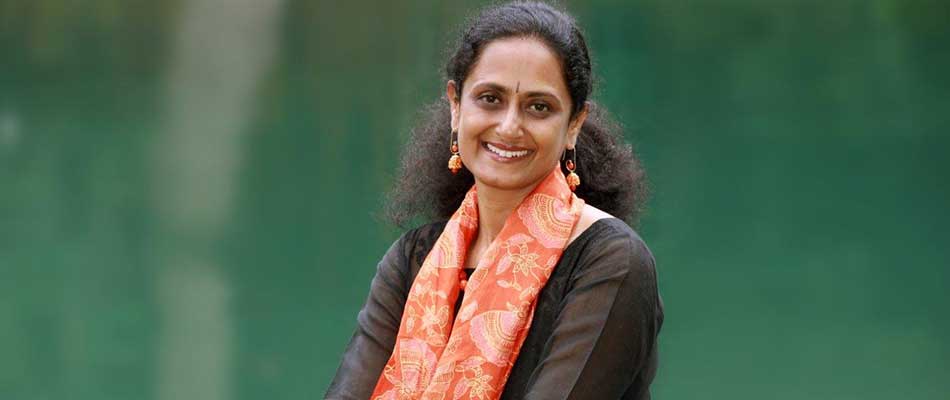How do we describe dance?
A non verbal communication... a spontaneous expression of inner emotions... celebration of life... sheer happiness and joy of moving... Nobel laureate Gurudev Rabindranath Tagore described it as a form of unsullied joy and entertainment. Legendary dancer/scholar, Dr Padma Subramanyam says, “For all those who are interested in the spiritual, emotional, intellectual, aesthetic, and historical or any other aspects of our dance art…It is high time that our universities had faculties for dance, giving the art its due place in the academic world.”
Dance is a composite art form. It implies dependence of the art form on many areas ranging from literature to theatre; sculpture to music for aesthetic enjoyment. ‘VishnudharmottarPurana’, the Sanskrit text from around 6th century A.D. narrates an interesting conversation between Sage Markendeya and King Vajra which explains the inter-relationship of dance, poetry, music, sculpture, painting and drama. Dance history clearly underlines the socio-cultural-political aspects and transitions in the performing art form accordingly. Hence, a dance student doesn’t merely study the technique but also probes into the context of the movement and the dance form.
According to American modern dancer Martha Graham, ‘Dance is a communication, and so the great challenge is to speak clearly, beautifully and with inevitability.’ It is important to achieve a clear gesture, precise movement and appropriate expression for effective communication which are not easy. The body is used as an instrument in every form of dance. Hence understanding of human anatomy, knowledge of human psyche/emotions becomes mandatory. An uninitiated student would experience the grace of articulated gesture and refined body movement after undergoing courses in dance. She learns to use face and eyes more effectively in presentation. Their faces glow with confidence, surprise after the performance as they get rid of the ‘stage fear’. They have no more complexes/inhibitions about their looks, about their body as they are glowing from within, feeling empowered with enhanced control on body. They have now realized the importance of sustained physical efforts, beauty of time invested in achieving one graceful gesture. They become more aware of their physical strengths and weaknesses. They feel more energetic, positive, and happy and start taking pride in themselves.
Martha Graham further adds,”The body is a sacred garment. It’s your first and last garment; it is what you enter life in and what you depart life with, and it should be treated with honour”. In contemporary times, lifestyle changes, advanced technology, fragmented families, changing morals and values are affecting one’s body and mind than never before. Things are available at the click of a finger. Advanced mechanization, gadgets have almost left no respect for physical labor. ‘Fast food age’ is making a big impact on our bodies and related physical, psychological ailments. Ms Graham’s words act as caution in such a scenario to be more attentive towards one’s physical, psychological and emotional health. It is very easy to get disoriented in the buzz of social media these days but the effort to coordinate different limbs together, in sync with melody and rhythm, bringing out a meaningful interpretation of the text through the movement of body compels the dancer to focus within, inward. Yoga explains the same meditative quality. Thus dance can help oneself to stay attuned with body, mind and soul.
On another note, we have seen saturation in several popular career choices of yesteryears. They no longer guarantee the successful ability to live life or earn a livelihood. It is our duty to provide holistic academic education to the youngsters and help them to choose a career and also make an impact on society. Liberal education does exactly that. It just doesn’t help students to go deeper into one domain but also equips them to identify links between different knowledge streams. Dance, within itself could be a replica of this concept of holistic education. It is not merely a decorative art form or a creative urge of a sensitive soul. It is much more than what we presume. Rightly recognizing this lacuna at the undergraduate education level in India, FLAME University, the pioneers of Liberal education, incorporated Fine and Performing Arts since its inception in the curriculum.
This is good news for dance enthusiasts who are looking forward to education with unusual combinations than that are offered in a traditional set up. This gives them an opportunity to study dance along with other domains of their interest like Psychology, Marketing, Film and Television and many others. For those who have been trained in any technique at the entry level enjoy the broader horizon of technique, fitness and injury prevention, choreography and performance. They venture into wider movement vocabulary, application of concepts into practice, analysis of movement and so on. They are now conversant with very important aspects of the contemporary dance world i.e. technology – sound, lights, editing and business aspects like marketing, finance and management under the Liberal Education auspices.
Veteran dance scholar, LeelaVenkatraman, in one of her speeches quoted well known vocalist Bade Ghulam Ali Khan saying “हर घर में एक तानपुरा लाओ क्युंकी ज्यो सूर कि खोज में लग जाता है वोह आतंकवाद नही फैलाता...” It is now time to acknowledge the contribution of art into our lives and encourage, support young minds to nurture their passions in these areas as family, as society and most importantly as educationists.
- Prof. Priya Joshi - Assistant Professor - Dance


